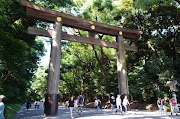Blogger Travel Interesting Places And Cultures In Japan
There are many places in Japan related to wellness care. so this blogger aims to provide you with interesting places
This blogger aims to give exposure to the Malaysian community who want to relax and enjoy the beauty of Japan. Significant differences in language, the technology out there and the high cost of living sometimes make us think three times to visit this rising country. But it's a loss if you don't go. The key is inventory. so many interesting places I want to share with you all about interesting places and cultures in Japan. For example Tokyo, Osaka, Kyoto, Hokkaido and others.
This blogger aims to give exposure to the Malaysian community who want to relax and enjoy the beauty of Japan. Significant differences in language, the technology out there and the high cost of living sometimes make us think three times to visit this rising country. But it's a loss if you don't go. The key is inventory. so many interesting places I want to share with you all about interesting places and cultures in Japan. For example Tokyo, Osaka, Kyoto, Hokkaido and others.
TOKYO
As you know, Tokyo is the largest Japanese capital and metropolitan region in the world by population (33 750 000) .Tokyo has 23 districts such as Shibuya, Edogawa, Toshima, Sumida and many others.
- Shinjuku Gyoen National Park is one of the oldest traditional gardens in Japan. In the park there are various attractions such as small lakes, traditional bridges, and a variety of beautiful trees. There are also several major gardens, the French Garden and the English Garden. The park will be the main attraction of the Japanese community for relaxing with the family in the spring. In addition, in autumn the flowers in this garden will change color to golden yellow and the scenery at this time is very beautiful.
- Sensoji Temple also known as Asakusa Cannon temple is a Buddhist temple located in Asakusa. Sensoji Temple is Tokyo's oldest temple. After entering the main gate of the temple, Kaminarimon (Thunder Gate), all the way to the second gate of Hozomon, there is a row of souvenir shops called Nakasime Street. This set of shops sells a variety of unique and attractive Japanese traditional souvenirs.
- Tokyo Disneyland is a theme park built on the movies produced by Walt Disney. The theme park was built in 1983 and is the first Disneyland theme park outside of the United States. While Disney Disney Tokyo is a fantasy theme park built on sea legend. Unlike Disneyland that is more inclined towards children, Disneysea is designed to entertain adult visitors.
- Akihabara is famous for its many electronics stores. In addition, Akihabara is also a haven for anime and manga fans. Among the unique attractions in Akihabara are Maid Cafe, Gundam Cafe and AKB48 Cafe and Shop
- In Ueno there are various museums such as Tokyo National Museum, National Museum for Western Art, Tokyo Metropolitan Art Museum and National Science Museum. For people who love history, culture and the arts, Ueno is a place to visit. In addition, in Ueno there is also the Ueno Zoo which is the first zoological park in Japan.
- Gunung Fuji is the highest mountain in Japan at 3,776.24 m (12,389 ft). Mount Fuji is well-known in the world for its almost perfect cone shape and even resembles a cone. Around Fuji Mountain there are 5 beautiful lakes namely Kawagushiko Lake, Saiko Lake, Tamanakako Lake, Shojiko Lake and Motosuko Lake.
- Yoyogi park is the largest park in Tokyo and is best known for a place to relax and picnic with family. In the park there are various attractions such as small lakes, traditional bridges, and a variety of beautiful trees. The park is located next to the Meiji Shrine and visitors will enjoy beautiful views of Yoyogi Park along the way to the Meiji Shrine.
Onsen
Japan is also known for its hot springs which is their daily routine to calm themselves down and relax to relieve their stress. Onsen is The volcanic nature of Japan provides plenty of springs. When the onsen water contains distinctive minerals or chemicals, the onsen have many benefit for the lifestyle:
- Boost Blood CirculationThe water found in natural hot springs contains a variety of different minerals, including calcium and sodium bicarbonate. Our bodies soak up these minerals when we are in a hot spring, which increases circulation and overall oxygen flow.
- Reduce Stress and Promote SleepThe mineral water in hot springs can also help reduce stress by relaxing tense muscles. Meanwhile as your body temperature rises in the bath, and then cools once you exit can also help you relax and fall into a deeper sleep.
- Relieve PainAn Israeli study published in the journal Hematology International found that hot mineral baths may aid in pain relief and fatigue caused by widespread pain. This is because the heat, although sometimes intense, can dull our perception of pain by blocking the pain receptors in our bodies. Also being buoyant in the water often allows for freer movement as the water supports the body’s joints.
- Heal Skin ProblemsThe high silica content found in hot springs can smooth and soften dry and rough skin. Meanwhile the sulfur contained in the water can also hold medicinal properties that may relieve conditions such as eczema and psoriasis.









0 Comments